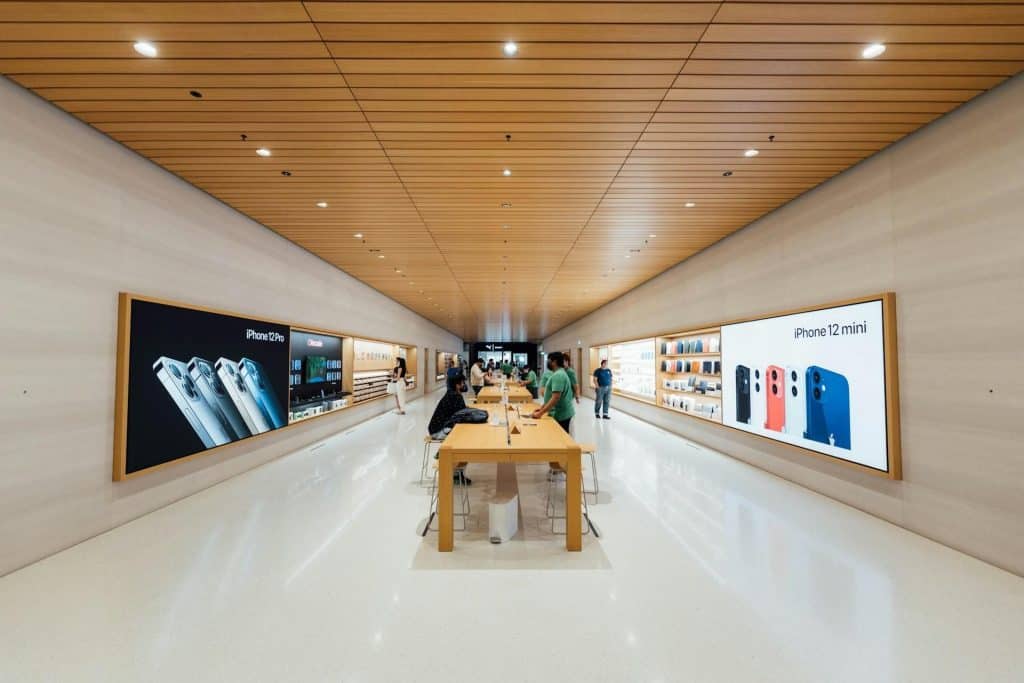In a world of constant noise; visually, digitally, and physically retail spaces are starting to whisper instead of shout. The shift isn’t just aesthetic; it’s strategic. Minimalist architecture has emerged as a powerful tool for retailers aiming to create calm, focused environments that speak directly to their brand identity.
More than just a design trend, minimalist architecture helps strip away distractions, putting the spotlight back on what matters most: your products, your customers, and your brand’s message. So, how does simplicity translate into stronger brand clarity? Let’s unpack that.
First Impressions Are Everything: Keep Them Clean
Walk into a cluttered store, and chances are you’ll feel overwhelmed before you even look at a price tag. But step into a space where every element is intentional, and you’re instantly more at ease.
Minimalist retail architecture focuses on openness, natural light, and clean lines. These elements not only create a serene atmosphere but also invite customers to take their time. You’re not being rushed or bombarded with options, you’re being guided to experience the space (and the brand) in a more meaningful way.
In essence, the design becomes a silent brand ambassador, reinforcing quality, professionalism, and intentionality from the moment someone steps inside.
Less Noise, More Focus
When you remove visual clutter, the human brain naturally becomes more focused. That’s not just an opinion; it’s backed by psychology. Retailers who adopt minimalist architecture are leveraging this principle to their advantage.
A minimal space gives the customer a chance to truly see the product. You can’t hide behind flashing signs or overcrowded displays; everything on the floor needs to earn its place. This not only encourages better product curation but also reinforces a brand’s confidence in what it’s offering.
And for the customer, the experience is refreshingly different. They’re not being distracted or overstimulated; they’re immersed in a curated, purposeful environment that lets the brand speak loud and clear.
Design Choices That Do the Talking
Minimalist architecture doesn’t mean boring or empty. It means every design choice has weight. Whether it’s the curve of a custom shelving unit, the warm texture of raw concrete, or the strategic use of negative space; each element is selected with the brand story in mind.
Lighting plays a huge role here. Minimalist spaces often rely on a mix of natural light and warm, directional lighting that highlights products like art pieces in a gallery. Flooring, wall finishes, and fixtures are chosen not to grab attention but to quietly support the brand’s tone; be it earthy, tech-forward, or luxurious.
You’re not just designing a place to shop, you’re designing a place to feel the brand.
Brand Clarity Lives in Consistency
One major advantage of minimalist architecture is how easily, it aligns with brand guidelines. If your brand is about calm, wellness, precision, or craftsmanship, a minimalist space visually reinforces those values without needing extra signage or storytelling.
Consistency across multiple retail locations is easier to achieve, too. When your design philosophy is rooted in simplicity, replicating the feel becomes a matter of following a clean framework. Whether you’re a boutique brand or scaling up, minimalism provides a flexible yet consistent backbone.
It also makes evolving your brand easier. Swapping out seasonal product displays or updating a focal wall becomes seamless when the architecture isn’t fighting for attention. In a minimalist space, even small changes can have a big impact.
The Subtle Psychology of Space
Beyond aesthetics, minimalism taps into deep psychological principles. Open layouts promote freedom of movement, which makes customers feel more comfortable. Neutral color palettes reduce cognitive load, helping people think more clearly.
Even the acoustics matter. Minimalist spaces often incorporate sound-dampening materials or leave out harsh overhead speakers, which contributes to a more peaceful shopping environment. This calm atmosphere reduces decision fatigue and increases dwell time two major wins in retail strategy.
And then there’s perceived value. When a product is displayed in a clean, uncluttered space, it automatically feels more premium. Minimalist architecture can elevate even modestly priced items by presenting them like luxury goods.
Real-World Brands Doing It Right
Look at brands like Aesop, MUJI, or Everlane, and you’ll see minimalism in action. These stores feel like sanctuaries; carefully curated, spacious, and inviting. But it’s not just about being trendy. Their store designs reflect the brand values: honest, thoughtful, and refined.
These brands don’t rely on loud marketing in-store. Instead, their architecture builds trust. When your retail environment is consistent with your brand promise, customers feel that alignment. That’s what keeps them coming back not just the products, but the experience.
Working With Experts Who Get It
Designing minimalist spaces that feel warm instead of sterile takes skill. It’s about balance, knowing when to subtract and when to emphasize. That’s why working with the right architectural partner is crucial.
Erin Morris is your go-to expert for clean, beautiful, and functional retail architecture that meets your business needs. Whether you’re opening your first store or scaling a franchise, Erin brings a sharp eye for detail, deep understanding of brand psychology, and a passion for creating environments that speak volumes quietly.
She knows that minimalist design isn’t just about aesthetics. It’s about making your space work harder for your business goals while staying true to your brand’s soul.
Minimalism Is Here to Stay and It’s Evolving
While minimalism has deep roots, it’s constantly evolving. The newest wave blends warm, organic materials like oak and clay with industrial elements like steel and glass. Sustainability is also playing a bigger role; fewer materials, less waste, smarter sourcing.
Retailers are recognizing that this approach isn’t a phase. It’s a long-term strategy for creating spaces that feel good, work well, and build stronger connections between brand and customer.
It’s about clarity, intention, and authenticity all values that today’s consumers care deeply about.
Start With Less to Offer More
Minimalist retail architecture isn’t about being trendy or stark. It’s about intentionality using space, light, and design to tell a clearer brand story. When done right, it builds trust, creates comfort, and brings your product into sharper focus.
So if your brand is feeling lost in the visual noise, maybe it’s time to turn down the volume.
Quiet, after all, can be pretty powerful.







